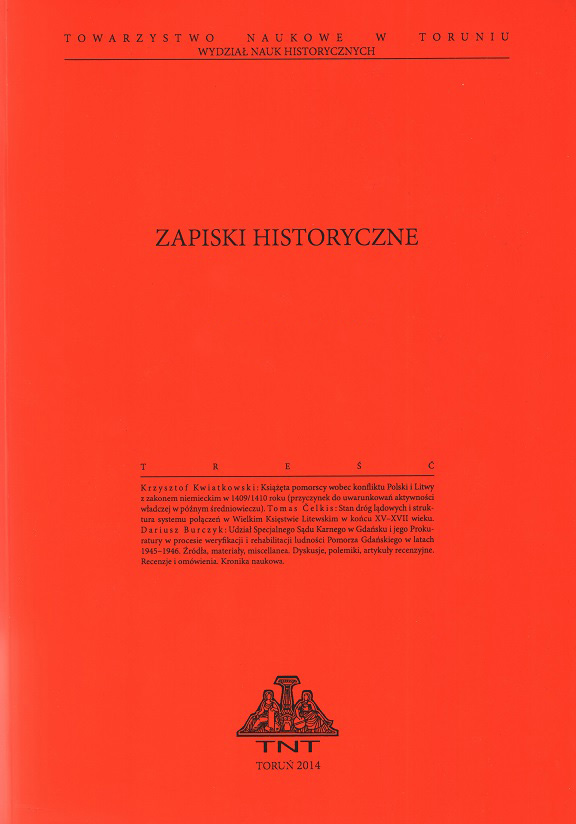Żegluga bałtycka XVII–XVIII wieku w świetle materiałów z archiwum w Amsterdamie
Baltic shipping in the 17th-18th centuries in the light of the materials from the archive in Amsterdam
Author(s): Maria BoguckaSubject(s): Economic history, 17th Century, 18th Century, Source Material
Published by: Towarzystwo Naukowe w Toruniu
Keywords: Baltic trade in the 17th century;Gdańsk merchants;Dutch merchants;Gdańsk trade;Dutch trade;the Polish-Lithuanian noblemen;the Polish-Lithuanian aristocracy in the 17th century;
Summary/Abstract: The article was based on the documents generated in the Notary Office of Amsterdam, which concerned the Polish noblemen’s residence in the Netherlands. The analysis of those documents was preceded by the description of the changes in grain trade in the 17th-18th centuries along with their consequences. The article presents the destinations of trade voyages from Gdańsk and the range of products involved in trade. The documents from the Notary Office of Amsterdam concern the fact of Polish noblemen becoming debtors of Dutch merchants. Their debts resulted from trade transactions or costs of their residence. Noblemen attempted to compensate their lower profits from agriculture with the trade activity as merchants. The article includes various examples of such activities conducted despite great risk and various threats. The documentation of the Notary Office of Amsterdam also includes files concerning the income of harbor workers, the record of charges for the shipping of goods presented in tables, letters of attorney, documents concerning promissory notes. The preserved files show that the Polish aristocracy and noblemen were very active economically in the 17th-18th centuries, which caused that there was no standstill in Baltic trade in the period under examination.
Journal: Zapiski Historyczne
- Issue Year: 82/2017
- Issue No: 4
- Page Range: 123-137
- Page Count: 15
- Language: Polish

